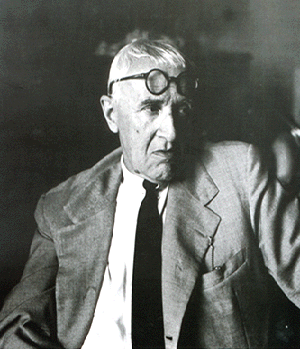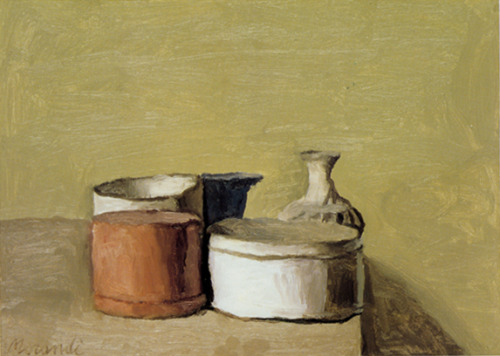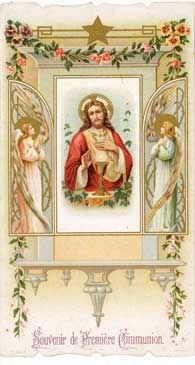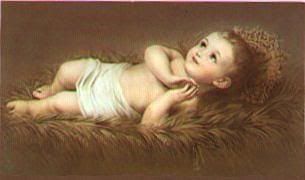+ JMJ +

Giorgio Morandi (Italian, 1890–1964)
Photo taken by Antonio Masotti in 1961.
[Source]


Landscape: The courtyard outside Morandi’s studio in Via della Fondazza, Bologna.
Giorgio Morandi

Still LifeOil on canvas
His paintings appear to transcend time and place, an effect he achieved by removing labels from his bottles, faces from his clocks, and people from his landscapes. [Source]
Giorgio Morandi
[Source]His paintings appear to transcend time and place, an effect he achieved by removing labels from his bottles, faces from his clocks, and people from his landscapes. [Source]

Landscape, 1928
Giorgio Morandi
[Source]
In fact, many of Morandi's works can be read as
arrangements of pure form. The subtle variations of these late works
demonstrate Morandi's capacity for discovering immense complexity within
the self-imposed limitations of his practice. [Source]

Still LifeOil on canvas
Giorgio Morandi
[Source]
Giorgio Morandi was born in Bologna on 20 July
1890. After his father died, the family moved to an old house at via
Fondazza 36. Morandi lived here for the rest of his life, with his
mother and his three sisters. He worked and slept in a single room,
surrounded by the simple, dust-laden objects he used in his paintings. [Source]

From 1907-13 Morandi studied at the Accademia di Belle Arti in
Bologna and travelled around Italy to study Renaissance art. He took
part in a group exhibition with the Futurists, but the association was
short-lived. When Italy entered the First World War, Morandi enlisted
but suffered a breakdown and was discharged. [Source]

He taught drawing in elementary schools from 1916-29. During this
period he was briefly associated with Metaphysical Painting, a movement
typified by the enigmatic still lifes of Giorgio de Chirico. After
Mussolini came to power, Morandi also exhibited with the semi-official
Novecento group. However, his closest ties were with the rustic
Strapaese movement, which advocated a return to local cultural
traditions. In 1930 Morandi became Professor of Etching at the Accademia
di Belle Arti, and his works began to be shown abroad. [Source]

Morandi emerged to international acclaim after the Second World War.
He received the first prize for painting at the 1948 Venice Biennale,
rapidly becoming one of the most respected Italian painters. However, he
appeared to shrug off the attention, commenting 'I don't ask for
anything except for a bit of peace which is indispensable for me to
work.' [Source]

In 1956, Morandi travelled outside Italy for the first time. After retiring from the Accademia in the same year, he achieved a new concentration in his work. He won the Grand Prize at the São Paulo Biennale in 1957. The esteem in which Morandi was held in Italy is reflected in Federico Fellini's film La Dolce Vita (1960), in which his paintings are featured as the epitome of cultural sophistication. By this time, however, Morandi had withdrawn to work at his studio at Grizzana. He died in Bologna on 18 June 1964. [Source]




















No comments:
Post a Comment